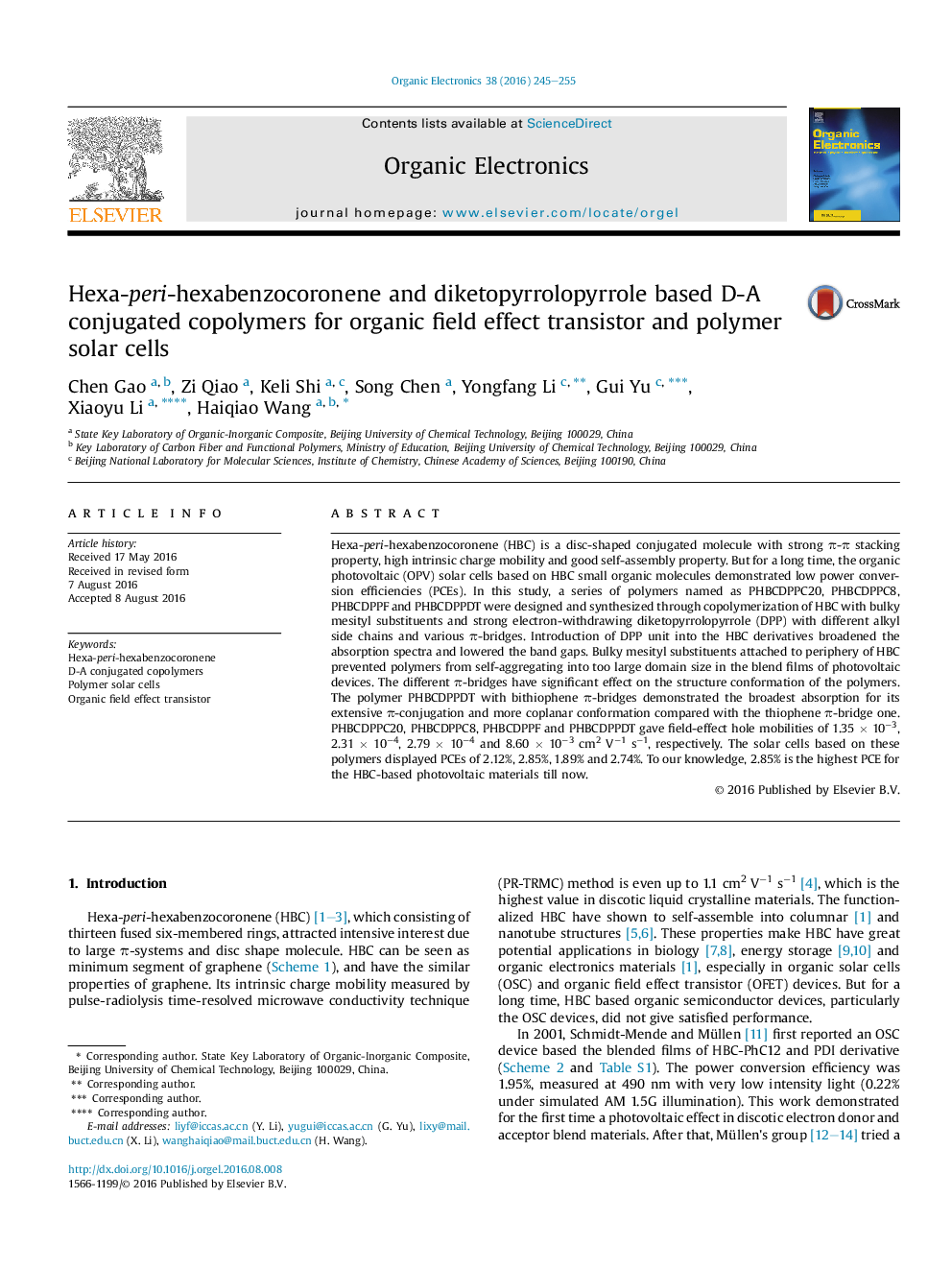| کد مقاله | کد نشریه | سال انتشار | مقاله انگلیسی | نسخه تمام متن |
|---|---|---|---|---|
| 1264167 | 1496819 | 2016 | 11 صفحه PDF | دانلود رایگان |

• Four D-A conjugated polymers based on HBC donor and DPP acceptor unit were designed, synthesized and characterized.
• The PHBCDPPDT polymer gave hole mobility of 8.60 × 10−3 cm2 V−1 s−1, which among the highest reported mobilities of HBC.
• The PHBCDPPC8 polymer demonstrated PCE of 2.85%, which is the highest value for HBC-based PSCs till now.
Hexa-peri-hexabenzocoronene (HBC) is a disc-shaped conjugated molecule with strong π-π stacking property, high intrinsic charge mobility and good self-assembly property. But for a long time, the organic photovoltaic (OPV) solar cells based on HBC small organic molecules demonstrated low power conversion efficiencies (PCEs). In this study, a series of polymers named as PHBCDPPC20, PHBCDPPC8, PHBCDPPF and PHBCDPPDT were designed and synthesized through copolymerization of HBC with bulky mesityl substituents and strong electron-withdrawing diketopyrrolopyrrole (DPP) with different alkyl side chains and various π-bridges. Introduction of DPP unit into the HBC derivatives broadened the absorption spectra and lowered the band gaps. Bulky mesityl substituents attached to periphery of HBC prevented polymers from self-aggregating into too large domain size in the blend films of photovoltaic devices. The different π-bridges have significant effect on the structure conformation of the polymers. The polymer PHBCDPPDT with bithiophene π-bridges demonstrated the broadest absorption for its extensive π-conjugation and more coplanar conformation compared with the thiophene π-bridge one. PHBCDPPC20, PHBCDPPC8, PHBCDPPF and PHBCDPPDT gave field-effect hole mobilities of 1.35 × 10−3, 2.31 × 10−4, 2.79 × 10−4 and 8.60 × 10−3 cm2 V−1 s−1, respectively. The solar cells based on these polymers displayed PCEs of 2.12%, 2.85%, 1.89% and 2.74%. To our knowledge, 2.85% is the highest PCE for the HBC-based photovoltaic materials till now.
Figure optionsDownload as PowerPoint slide
Journal: Organic Electronics - Volume 38, November 2016, Pages 245–255